This lens was my staple three meals a day until last month, when I procured a Nikkor 300mm f/2.8G AF-S VR and having held both lenses simultaneously for awhile, I’ve had a chance to juxtapose them against each other, and will author a shootout sometime in the future, but considering my lack of time and slowness in doing anything, you are recommended not to hold your breath for it.
3. Is this the right lens for you? I don’t know! That is for you to decide. Don’t let anybody else take that decision for you; only you know what’s best for you! The aim of this review is merely to equip you with knowledge and help you make an informed choice.
a) Nature and Wildlife
– Mammals, Birds, Reptiles, Amphibians and Insects
– Flowers and Other Floral Abstracts
– Faunal Scapes
– ‘Compressed Landscapes’
b) Portraiture
c) Fast Cars
The five areas that concern me when evaluating a lens of this nature are:
1. Optical Quality – Sharpness, Contrast, Bokeh, Colour Neutrality, Distortion, Chromatic Aberration, Ghosting and Flaring
2. Auto-focus Performance – Focus Accuracy and Speed
3. Build Quality – Solidity of Lens Barrel, Switches and Hood; Weather Resistance
4. Handling – Ease of Use, Weight, Dimensions, Balance, Minimum Focus Distance/Magnification and Stability
5. Performance with Teleconverters – I’ll talk about this in the respective categories. I mostly use only the TC14E II (1.4x) teleconverter, although I have the TC20E (2x) AF-I too. I have never used the TC17E II (1.7x) teleconverter.
The short review is that this lens is an optical gem. Chances are that this is all you need to know, but if you like reading long answers, see below.
And if it does, rest assured that the sharpness and contrast of this lens are excellent right from f/4 all the way down until diffraction sets in. Stopping down to f/5.6 through to f/8 improves both attributes and takes them to the realm of the spectacular, but the lens is already so biting-good wide-open that you may seldom bother to stop down except to increase depth of field. This is important, for the value of such a lens is diminished if it’s not capable of performing well at its largest aperture.
Here’s a test performed casually on an overflow pipe outside my window. The setup was mounted on a tripod. Note that this is a test of only centre sharpness. I was too lazy to test corner sharpness but I don’t think it would be vastly different on a DX body.
And here is how it looks after a couple of rounds of quick sharpening using the Sharpen tool in PS.
1.I.b. Colour
1.I.c. Bokeh
All the above are shot at f/4. I was too lazy to pull out shots taken stopped-down, but rest assured that it’s equally good at all apertures (unlike the 300mm f/2.8 AFS (non-VR), which is said to be hideous at f/5.6 and smaller).
This lens is astonishingly free of longitudinal and lateral chromatic aberration even in tough lighting conditions. Extraordinarily, in more than 100,000 images I’ve made in all varieties of lighting with this lens during the three years that I’ve been using it, I am yet to encounter so much as a hint of colour fringing to-date.
Here are a couple of abusive 100% crops from the above image.
1.I.e. Distortion
I haven’t noticed any significant barrel or pincushion distortion in any conditions at any focal distance so far, which is what you’d expect from a quality telephoto.
Flare performance is phenomenal. I’ve never experienced any ghosts or flare with this lens at any aperture, even while shooting directly into the sun. Contrast holds up very well when shooting against the light. This is truly exceptional performance, making this lens a default choice if you find yourself working in such conditions much of the time.
II. With TC14E II:
Performance with the 1.4x TC is stellar. The loss of sharpness and contrast is evident but minimal even wide-open at f/5.6, and even shooting quick ‘grab-shots’ without any due care for stabilization technique, I’m able to consistently achieve good results with the combination. Of course stopping down by one stop, to f/8, gives optimal results, but I do so only when I need a deeper field or when the light is good enough to afford the luxury. Otherwise, I shoot wide-open at f/5.6 all the time with brazen impunity and although results straight out of the camera will not rival that of a native 400mm lens wide-open, I find that one round of sharpening in processing fixes this easily, bringing the performance very close to at least that of the 200-400mm f/4G AFS VR at f/4 at 400mm from what I’ve witnessed first-hand.
All the other quality attributes remain the same as described above for the native lens.
Some samples with 100% crops below.
Note that:
1) All the images have been shot with the NIKKOR 300mm f/4D AFS with Nikon TC14E II 1.4x Teleconverter. The lens DOES NOT have VR (optical image stabilization).
2) All the images have been shot WIDE-OPEN at f/5.6.
3) NO TRIPOD has been used to shoot any of the images. They all are either hand-held (including the Brahminy kite in flight and the painted stork; which was shot from a rocking boat!), or off a monopod (all the other images).
4) A round of sharpening has been applied in PP. The reason I’ve done this instead of showing unprocessed images straight out of the camera is because I want to show how the images will look in real use (when all of us WILL use sharpening I’m sure) instead of theoretical sharpness straight out of the camera. But apart from sharpening, I have NOT applied any other processing.
5) All images are from my 12MP D300, which means that the 100% crops resemble looking at a section of a print that is 21 inches across (printed at 200dpi) on the longer side from a distance of one foot, which I think is a fairly stringent test of sharpness by any standards.
6) I am not showing the ‘best-case scenario’ here (in other words, I have NOT cherry-picked at all, but just picked images at random). I have even sharper images than these but I was too lazy to dig in deeper and just showed whatever was readily available.
1) Painted Stork from Boat Full-frame
f/5.6 1/2500sec ISO 200
2) Brahminy Kite in Flight Slightly Cropped-frame:
f/5.6 1/1250sec ISO 200
100% Crop:
3) Pelican in Flight Full Frame:
f/5.6 1/1250sec ISO 200
100% Crop:
4) Pelican Wading Full-frame:
f/5.6 1/1250sec ISO 200
100% Crop:
5) Pied Buschat (female) Full-frame
f/5.6, 1/320, ISO 500
100% Crop:
6) Little Green Bee-eater Closeup Full-frame
f/5.6 1/640sec ISO 200
100% Crop:
And this is what it can do if stopped down to F8:
Common Kestrel Perched Full-frame
f/8, 1/640sec ISO 250
Are these sharp enough? For all practical purposes, for me, they are! And they look even better on paper. I’ve regularly made 12 x 18 prints of some of the above images and many more shot wide-open with the TC14E II and they look perfectly acceptable.
III. With TC20E II (AF-I)
The TC20E II is widely notorious for its softness and I’ve found this to be true but the keeper percentage with this lens is not zero, although it is quite low. With some practice and in good light, it is possible to achieve acceptable images, as seen below. The first image was shot hand-held while the second was shot off a monopod.
100% Crop:
100% Crop:
2. AUTO-FOCUS PERFORMANCE
I. Native Lens:
Focus acquisition is fast and prompt even in low light. The lens normally doesn’t hunt except in very low light or extremely confusing situations. Accuracy is bang-on every time. Flight shots are very easy. Manual focus is a breeze because of the lovely focus ring (more on that in Handling), the instant override available and of course the bright image in the viewfinder due to the f/4 aperture. Overall, AF performance is very satisfactory if not scorching.
II. With TC14E II:
Adding the 1.4x TC certainly slows the focus down noticeably and the lens is more prone to hunting, especially in low light. However, it is still good enough for most situations including flight shots, especially if the focus limiter is employed. Focus accuracy is never an issue.
III. With TC20EII (AF-I):
Nikon says lenses F4 or slower won’t support auto-focus with the 2x TCs, but the 300mm f/4D AFS does with the TC20E II, although perfectly woefully. For all practical purposes, only the centre sensor is of any use, and only in good light at that. In low light you can forget about auto-focus and should grab the big ring to focus manually. This experience is based on my use on a D300, and I cannot comment on how this compares to performance on other bodies, either more basic or more advanced than the D300.
Overall, though, I wouldn’t recommend the TC20E II with this lens to anybody except the most committed and disciplined, or those who most desperately need that focal length.
3. BUILD QUALITY
And brings home the bacon fast and sharp.
For more images, visit my Facebook page at http://www.facebook.com/santigris .
The ‘fine’ print:
© Text and Pictures copyright Santosh Saligram. No part of this essay may be reproduced in any form without the prior written permission of the author.

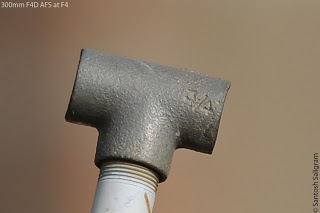
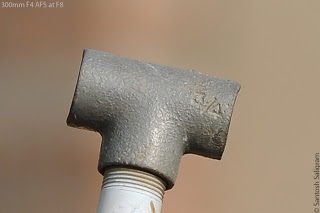



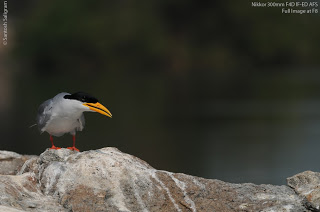






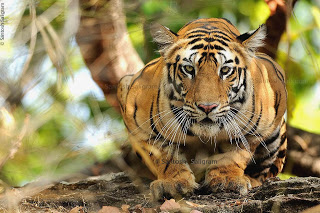

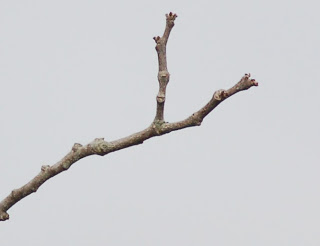




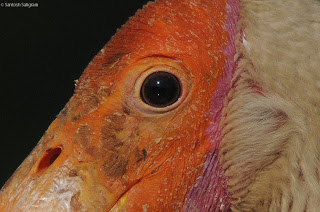







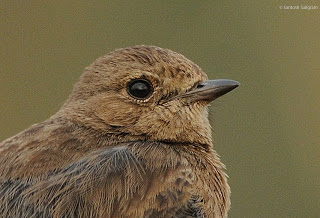
















Lovely review Sant.. 🙂 I loved the non 'too' te3chnical review!! Im a Canon boy, but maybe in a year or two i will buy a Nikon system as my secondary system. & great images mate!!
LikeLike
Already brought this lens for my nikon D60 body,but yet to try this as it is in transit.
LikeLike
Angad, thanks. :-)ap, good luck! I'm sure you'll love it!
LikeLike
What an review Santhosh!! Liked it all the way.. I loved all ur pics in FB.. and INW.. was decided to buy this.. and even I was planning for Canon F4 300mm after watching Sowmyajith Nandys Pics.. now either Nikon or Canon!! but buying it for sure.. Thanks for a lovely and easily understandable Review!!
LikeLike
Loved it thoroughly, maybe because it was not too technical!!!!if I were a nikon shoter, I'd grab this (its also the most reasonable 300mm f4 around- at 60 k odd).the canon is 90 k i guess and the one for my pentax where available is 1200 USD :-(Soone, I see a Vr version of this in the offing ay rs. 100k or so. So guys with Nikons. grab the ones available.
LikeLike
Hi Santhosh…Nice review …. Last week I bought D7000… not yet decided, whether to go for 300 f4 or 300 f2.8 VR … thanx for a detailed review.
LikeLike
That was a lovely review. I enjoyed reading that. I use this lens with a 1.7x and find that f4 is really slow in South Indian conditions at least – the TC makes it 6.7 wide open and its not acceptably sharp until at least f8. Just used it this past weekend with the 1.4x and that was too slow wide open at f5.6 – I was at ISO 1600 most of the time getting only 1/60 or so. Not fun.Congratulations on the upgrade – expecting great stuff from the big gun.
LikeLike
Thanks, all!Thank you for your thoughts on the 1.7x, Kartik! And I understand your predicament with the 1.4x as well – that was one of the reasons I spent big money on the F2.8 big brother. 🙂
LikeLike
Beautiful review….I am also thinking about this combination as I would like to upgrade from my 70-300VR. I have heard that Kenko Pro 300 1.4x TC s are optically same as of Nikon's but at half of the price. Do you have any idea about the Kenko TCs?
LikeLike
A really first class interesting review.
LikeLike
Thank you ever so much for your kind words, Peter!
LikeLike